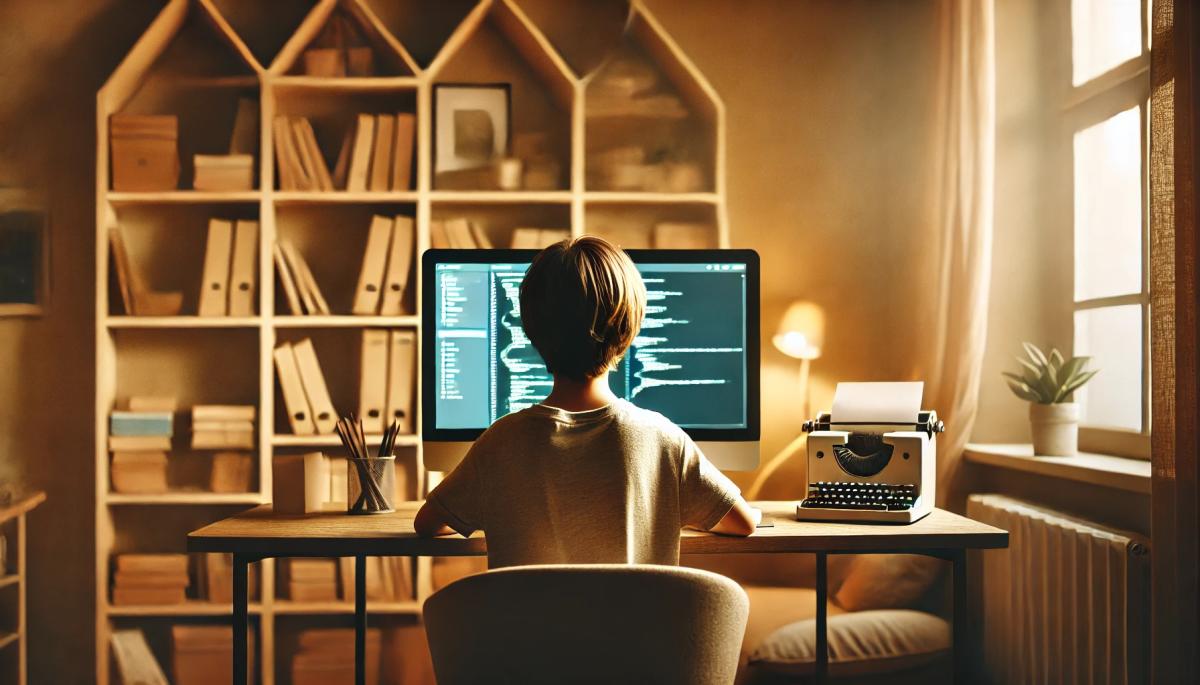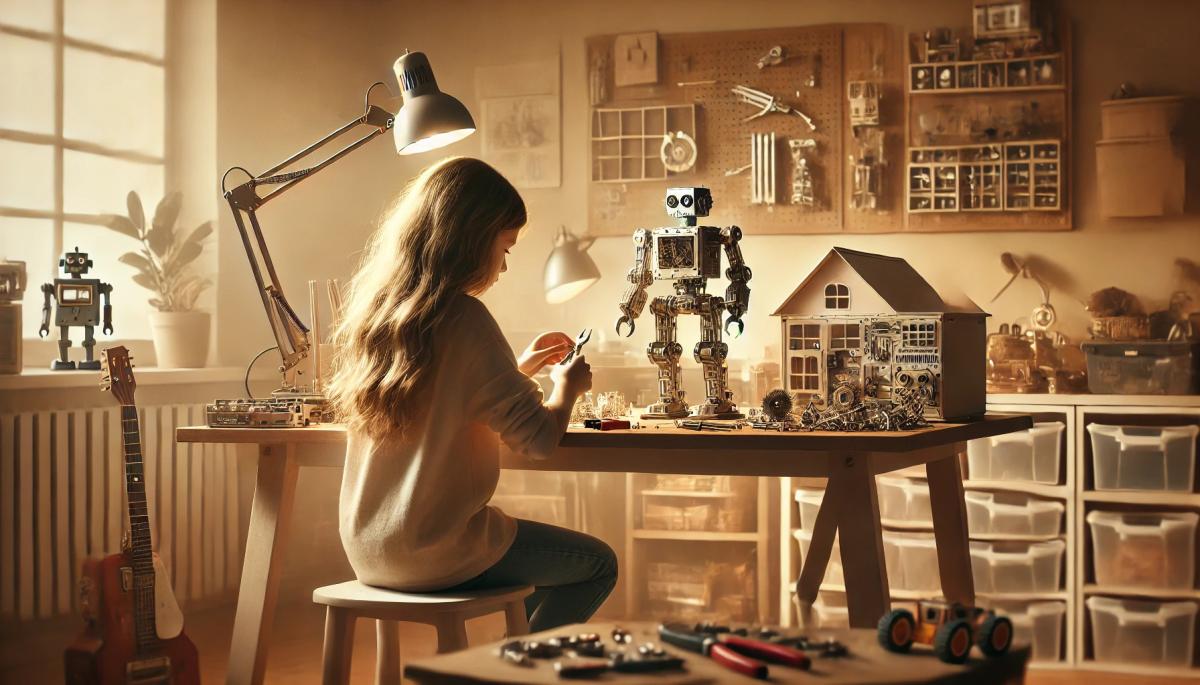Programming is not just about writing codes, it is a path to developing logical thinking and creativity. Discover how you can introduce children to the world of programming in a fun way, from simple block languages to real coding.

Programming has become a key skill of the 21st century. Therefore, it’s no surprise that more and more parents are looking for ways to teach their children at least the basics. In addition to enhancing their future employability, it also exercises their logical thinking and creativity. For this reason, we have prepared a short guide to programming for schoolchildren.
Why start in elementary school?
A child's mind is extraordinarily perceptive and able to absorb new concepts. Early programming exposure helps children develop analytical thinking naturally. They learn to break down complex problems into smaller, manageable parts, a skill useful not only in programming, but also in math, science, and everyday life.
In any case, programming is not just about writing code. It's a creative process that allows kids to create their own digital worlds.
In programming, children learn to:
- think systematically and solve problems,
- develop their imagination and creative thinking,
- deal with errors and learn from them,
- persevere in solving more complex tasks,
- collaborate with others on joint projects.
Fun and interactive learning
The key to successful programming education is proper motivation and the right tools. Children learn best when the activity is engaging, and they see immediate results from their work. A good choice is block programming. It is offered, for example, by Minecraft: Education, which is a great example of how to combine a popular game with programming lessons. In this environment, children naturally experiment with code and instantly see the consequences of their decisions.
This approach eliminates frustration from syntactic errors and allows the focus to stay on the logic of programming. Another popular program is Scratch, which allows children to arrange colorful blocks like a puzzle to create functioning programs. RoboMind, on the other hand, offers the possibility to program a virtual robot, providing children immediate visual feedback.

Don't forget creativity
Programming is not just about following instructions and completing pre-set tasks. It is primarily a creative activity where children can let their imagination run wild. When we allow them to create projects based on their own interests, their motivation significantly increases. Some might want to program a simple music app, while others could create an interactive story or a game with their own characters.
This freedom of choice supports not only creativity but also perseverance in problem-solving. There are many ways to connect the digital world with physical activities. Robot kits like LEGO Mindstorms or Ozobot bridge the virtual and real worlds. Children can program real robots to move around, react to stimuli, and complete various tasks.
However, basic programming concepts can be taught without technology. You can use so-called "unplugged" activities, which help children understand the principles of algorithmic thinking using everyday items and games, including:
- drawing procedures and flowcharts on paper,
- board games focused on logical thinking,
- physical activities where children themselves act as robots and follow given commands,
- solving puzzles and logic tasks.
Gradual transition to text programming
Once children master the basics of block programming and logical thinking, the time comes to introduce text programming languages. Python is an ideal first choice due to its clear syntax. It is important to proceed slowly and systematically, demonstrating each new concept with practical examples. Children should always see the results of their work — be it a simple calculator, a text-based game, or a program drawing geometric shapes.
When choosing a programming environment, it is important to consider the child's age and experience. For the youngest programmers, starting at age seven, Tynker is ideal, offering a wide range of activities from the simplest to the more complex. Children from eight years old can start with Scratch, where they create their first animations and games.
Around the age of ten, they are ready for Minecraft: Education Edition or Alice for 3D animations. From twelve years old, they can gradually move to Python and other text languages. At any rate, remember that every child has their own pace. Be patient and try to find ways that make learning easier and more enjoyable for them.
How to effectively extend Wi-Fi throughout the house?

Are you troubled by a slow Wi-Fi connection in certain parts of your home? In this article, we'll show you how to extend the signal to every corner. You'll learn how to properly place the router and how to extend the connection throughout the home.
USB4 vs Thunderbolt 4: How Do They Differ and Which is Better?

Want faster connections and fewer cables? USB4 and Thunderbolt 4 are the future. Our article clearly presents what these technologies can do, how they differ, and which is best for you. Whether you're a gamer or a content creator, USB4 and Thunderbolt 4 make life a lot easier.
What are botnets and how can they turn your computer into a hacking weapon?

Botnets represent one of the most dangerous weapons of cybercriminals. These are networks of infected computers that are secretly controlled remotely. Your computer can become part of this army of "zombie" devices and be misused for DDoS attacks, spam distribution, cryptocurrency mining, or data theft. How to recognize that you are a victim and how to effectively protect yourself?
Optimizing the internet for a smart home: How to set up a network for IoT devices?

Looking for a way to ensure your smart home operates without interruptions and issues? Proper setup of a home network is crucial for the smooth operation of all connected devices. Our article will guide you through selecting the right router, its strategic placement, and optimal settings for different types of households.
5 alternatives to ChatGPT: Choose Your AI Assistant Tailor-Made

ChatGPT has changed the world of artificial intelligence, but it's not the only player in the AI assistant field. Discover five intriguing alternatives with different focuses – from analytical Claude to the versatile Gemini and the European Mistral. Each excels in different areas and offers you distinct functionalities.
AI in 2025: Everything You Need to Know About Artificial Intelligence

We will guide you through the basic concepts of AI, from machine learning to neural networks and natural language processing. You'll learn how to start practicing AI, which tools to use, and how to keep up with this fast-evolving field.